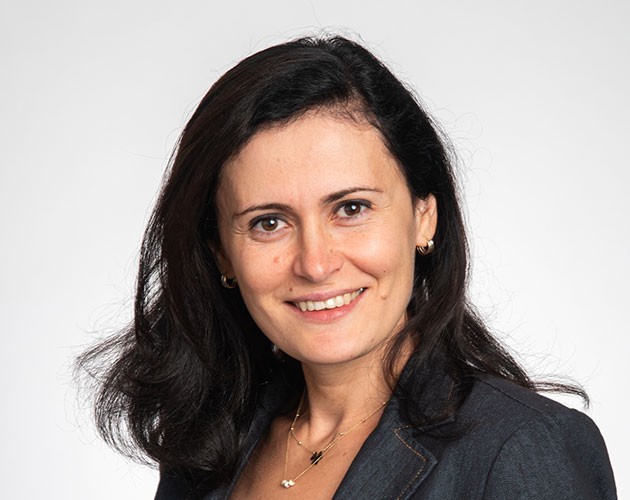The Drug Development Process: An Intensive Seminar

You’ve seen the TV ads time and again: A new prescription drug has just come to market that promises to alleviate the symptoms of Crohn’s Disease, arthritis, allergies, migraines or myriad other ailments. These new prescription drugs seem to inundate us on a daily basis. Why? Because there’s big business in drug development: The Center for Medicare and Medicaid Services estimates that prescription drug spending will grow an average of 6.3 percent per year from now until 2025.
So when you see that TV commercial promoting this new drug, it’s “old news” to the biopharm company that created it. Coupled with rapid-fire scientific advances that allow biopharm companies to better understand diseases at the molecular level, it only follows that new prescription drugs are coming to market faster than ever before.
But a behind-the-scenes look at the drug development process shows that the road to market is a much longer and winding path than the general public realizes. According to the Pharmaceutical Research and Manufacturers of America (PhRMA),
“Scientific, technical and regulatory challenges related to drug development create complexities as companies often focus their R&D where the science is difficult and the failure risks are higher. As a result, the process for researching and developing new medicines is growing in difficulty and length. On average, it takes at least 10 years for a new medicine to complete the journey from initial discovery to the marketplace, with clinical trials alone taking six to seven years on average. The average cost to research and develop each successful drug is estimated to be $2.6 billion. This number incorporates the cost of failures—of the thousands and sometimes millions of compounds that may be screened and assessed early in the R&D process, only a few of which will ultimately receive approval. The overall probability of clinical success (the likelihood that a drug entering clinical testing will eventually be approved) is estimated to be less than 12 percent.”
With those staggering numbers, it’s imperative now more than ever for anyone working in drug development to understand the complex route from discovery to marketplace. Fortunately, our long-running (since 1996) Drug Development Process: An Intensive Seminar aims to do just that. Instructor Dr. Aditya Das—founder and principal of Pharmaceutical Consulting LLC—recently chatted with me to discuss the real-world applications for anyone hyperfocused on one aspect of a drug’s journey.
Why is this course so important for anyone working in the drug development process?

As I constantly mention to my colleagues, friends and clients in the pharmaceutical industry, we are developing therapeutics for a variety of disease areas for which there needs to be an in-depth understanding of not only the operations in the process, but coordination, planning and execution. This is coupled with a mechanistic understanding (to the extent possible!) of the disease process and our proposed intervention. We are not manufacturing commodity products where the product types may not be differentiated or where the risks are far lower as compared to developing a label claim for a medicine through clinical trials. It is very important to understand the risks involved at each stage of the process of drug development—from discovery through clinical trials to commercialization—and this can only happen when there is communication across the specialties: chemistry, manufacturing and controls, nonclinical, clinical and regulatory operations.
Too often, our industry comprises silos where cross-communication is not really encouraged and where individuals must be mentored to “break out” of these artificially restraining barriers. To my knowledge, there is no equivalent course that integrates all aspects of pharmaceutical-drug product development and encapsulates such a breadth and diversity of topics while creating a fundamental understanding in a week!
Who is this course designed for?
We try our best to integrate the latest findings and trends in the industry by presenting a balanced view; at the same time, we emphasize the fundamentals of cGxP (current Good Practices), where the x relates to manufacturing, laboratory, clinical and documentation, as well as the elements of regulatory filings at the various stages of drug development.
The emphasis is applicable to anyone who works in the field—from all R&D personnel to commercial operations (quality, regulatory, manufacturing). Our focus on understanding the pathway from bench to market is outlined using case studies, often based on our personal experiences and the benefits of the lessons learned. This helps create a thought process around problem-solving.
We keep in touch with the latest guidelines from the FDA and our speakers discuss relevant portions during their presentations and discussions.
The drug development process has a global impact. How does that relate to the course topics?
This is increasingly being observed as drug-product development is now truly a global process. Drug-substance actives are increasingly being produced in India or China, where formulation development and combination product development may be outsourced to global contract services companies with multiple laboratories and facilities around the world.
Additionally, developing countries are now increasingly interested in producing medicines for local and regional markets in order to control costs and reduce imports. They are reaching out to the ICH (International Council for Harmonization) Guidelines as a foundation for developing good manufacturing and regulatory practices.
In the class, we will focus on Regulatory Harmonization aspects and the fundamentals where basic documentation practices have the same impact on quality, manufacturing and resultant Regulatory Filings, regardless of location.
We have venture-capital experts on our panel who will speak to current trends and return-on-investment calculations while maintaining oversight on quality.
The course topics adapt to trends in the workforce. What trends are you seeing?
We keep in touch with the latest guidelines from the FDA and our speakers discuss relevant portions during their presentations and discussions. For example, we’ll discuss the Generic Drug User Fee Act II (GDUFA II) Guidelines issued by the FDA in April this year and its impact on the development of complex generics.
Similarly, while Pharmacogenomics and Biomarkers are a current “hot” trend, it is very important to also present a balanced perspective, again using actual case studies to outline the challenges and hurdles faced, as well as how companies and products have failed due to an overzealous approach or one where all the risks have not been properly elucidated or outlined.
My current work focuses on bringing client’s drug products to market, specifically using the 505(b)(2) regulatory pathway.
You’ll be bringing your experience to the classroom, as well. Tell me a bit about your work.
I have more than 25 years of work experience in the U.S. biopharmaceutical industry, focusing on Combination Product Therapeutic Strategies for the treatment of infectious, genetic, allergic, metabolic, central nervous system (CNS) and oncologic diseases. Fortunately, I have been mentored by leaders who were themselves always curious learners with a vision to develop useful products. They would never hesitate to roll up their sleeves and work with us in the lab when needed. They have never failed to provide encouragement and have become friends for life!
My current work focuses on bringing client’s drug products to market, specifically using the 505(b)(2) regulatory pathway: an already-marketed product is optimized for delivery via a different route.
For example, the treatment for tuberculosis encompasses three antibiotic pills taken orally three times a day for nine months. This basically destroys your liver and GI tract while creating extremely drug-resistant mycobacteria. It would therefore be more efficient to deliver a second- or third-generation antibiotic directly to the lungs. Or a dry-powder inhaled vaccine.
I have also developed an interesting taste-masked ibuprofen suckable tablet that is currently being positioned for the UK market as a “General Sale List Medicine.”
And how are you translating all of that experience to the classroom?
I try to convey my experiences as they happened: the nervous excitement, stress and difficulty in attempting to understand the specific problem we were trying to solve. For example, why the spacers in our dry-powder inhaler during a Phase III trial were turning pink. Or how we went through tasting 22 different formulations to taste-mask a very bitter ibuprofen drug substance so that it could be retained in the mouth. And then our excitement at finding one that worked!
I feel that if I can relay the methodology of my mentors through their infectious energy and humility, then that would go a long way to retaining the message!

